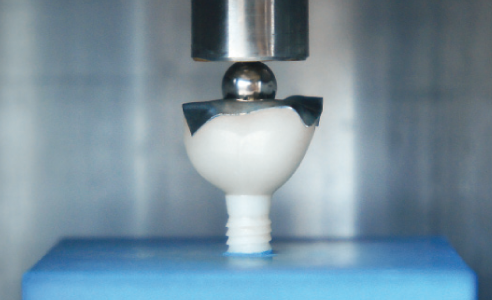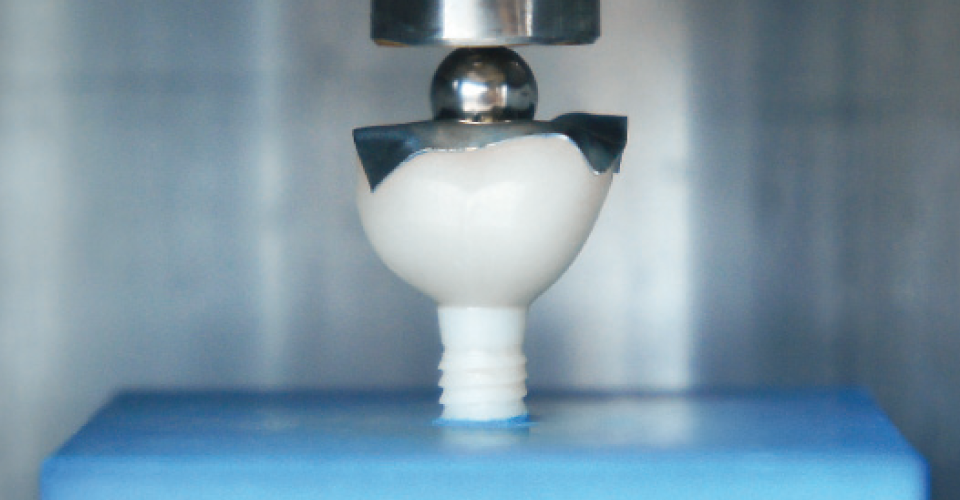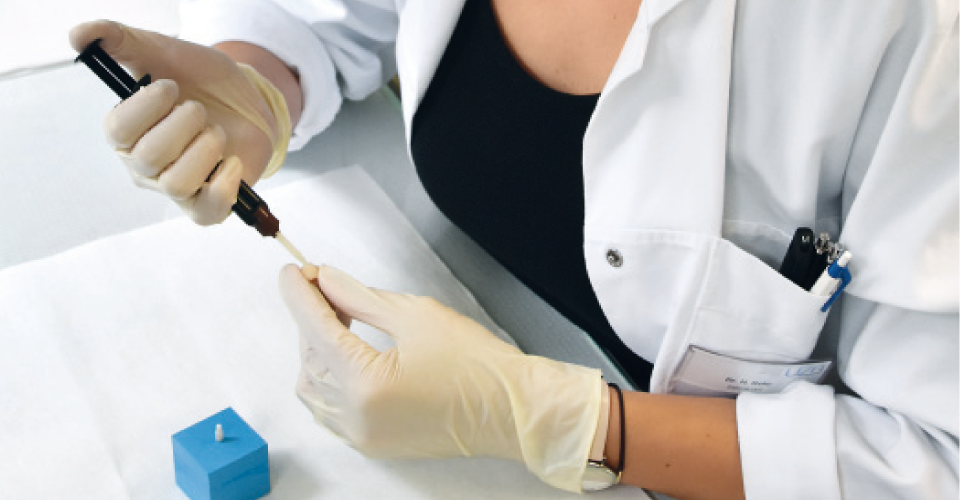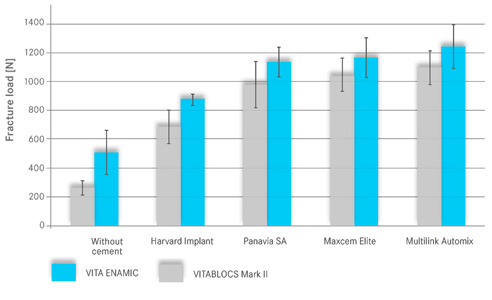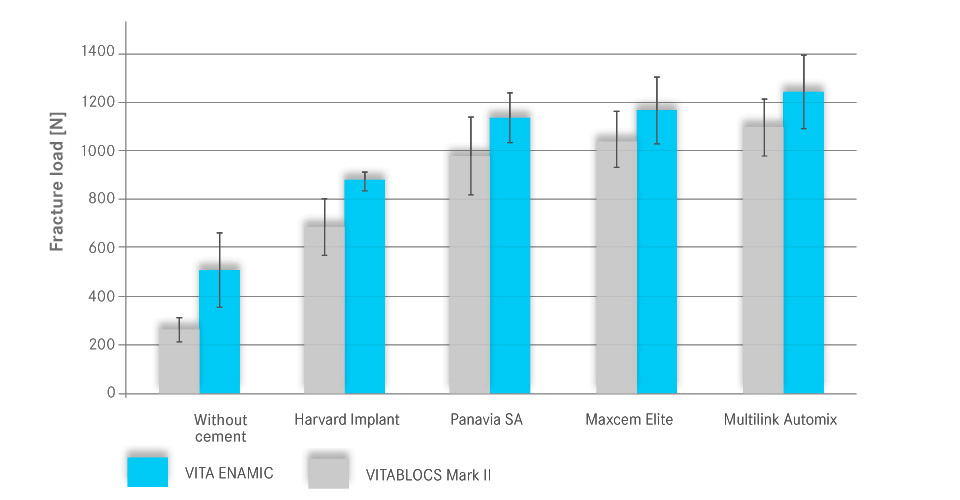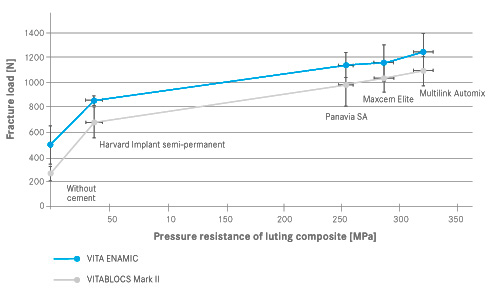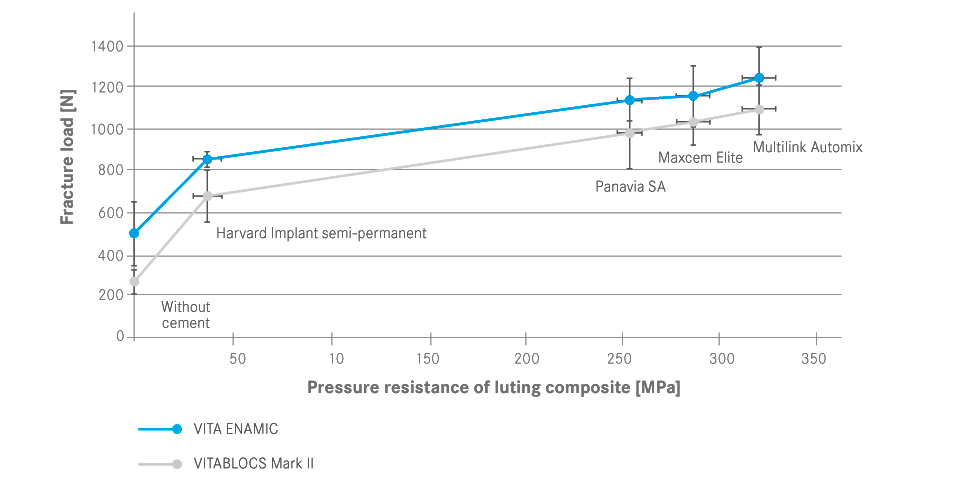Fracture load study on implant-supported crown restorations
Due to the rigid ankylotic anchoring of the implant in the bone, high forces act on the superstructure, which can lead to chipping and fractures in the case of restorations made from conventional, brittle ceramics. Thanks to its dual ceramic polymer network structure, the hybrid ceramic VITA ENAMIC (VITA Zahnfabrik, Bad Säckingen, Germany) has a comparatively high dentine-like elasticity. This elasticity allows the material to absorb masticatory forces. In the following interview, Dr. Nadja Rohr (University Center for Dental Medicine, Basel, Switzerland) reports on her findings in fracture load tests with implant-supported crowns at the University of Basel.
DV: In an in-vitro study, you examined the fracture load of crowns made of hybrid ceramic and traditional ceramic on one-piece ceramic implants. How did you proceed in that case?
Dr. Nadja Rohr: Standardized molar crowns made of hybrid ceramics and feldspar ceramics were attached to zirconium oxide implants (ceramic.implant, 4.0 mm, VITA Zahnfabrik) using four different attachment composites. After storing them in water for 24 hours at 37°C, the crowns reached their breaking point. The luting materials used were also characterized according to their flexural strength, E-module, tensile strength and pressure resistance.
DV: What were the differences between restorations made of VITA ENAMIC hybrid ceramic and traditional ceramic in the fracture load tests?
Dr. Nadja Rohr: With the use of hybrid ceramics, significantly higher fracture load values can be achieved as compared with feldspar ceramics.
DV: In your test series, the crowns were bonded with self-adhesive and fully adhesive composites. Did that affect the fracture load values determined?
Dr. Nadja Rohr: High fracture load values for hybrid ceramics and feldspar ceramics were achieved with luting composites that had high pressure resistance.
DV: How relevant is the pressure resistance of a luting composite in daily clinical practice?
Dr. Nadja Rohr: High pressure resistance luting composites can increase the stability of the overall system. In the molar range there are maximum masticatory forces of up to about 1000 N. Choosing the right luting composite can have a positive effect on the clinical success of hybrid and feldspar ceramic restorations.
DV: What should be considered when choosing the luting composite and what should be taken into account during the integration process?
Dr. Nadja Rohr: Dentists should choose a luting composite that meets the clinical requirements. For attaching hybrid ceramic crowns to zirconium oxide implants, this would be an adhesive luting composite with high pressure resistance. It is important for the conditioning to be performed according to the manufacturer's instructions.
Dr. Nadja Rohr, Universitätszahnkliniken Basel, Switzerland; Report/Literature: Rohr N., Coldea A., Zitzmann NU., Fischer J. Loading capacity of zirconia implant supported hybrid ceramic crowns. Dent Mater 14, 1 64-71 (1998) 2015;31: e279-88



